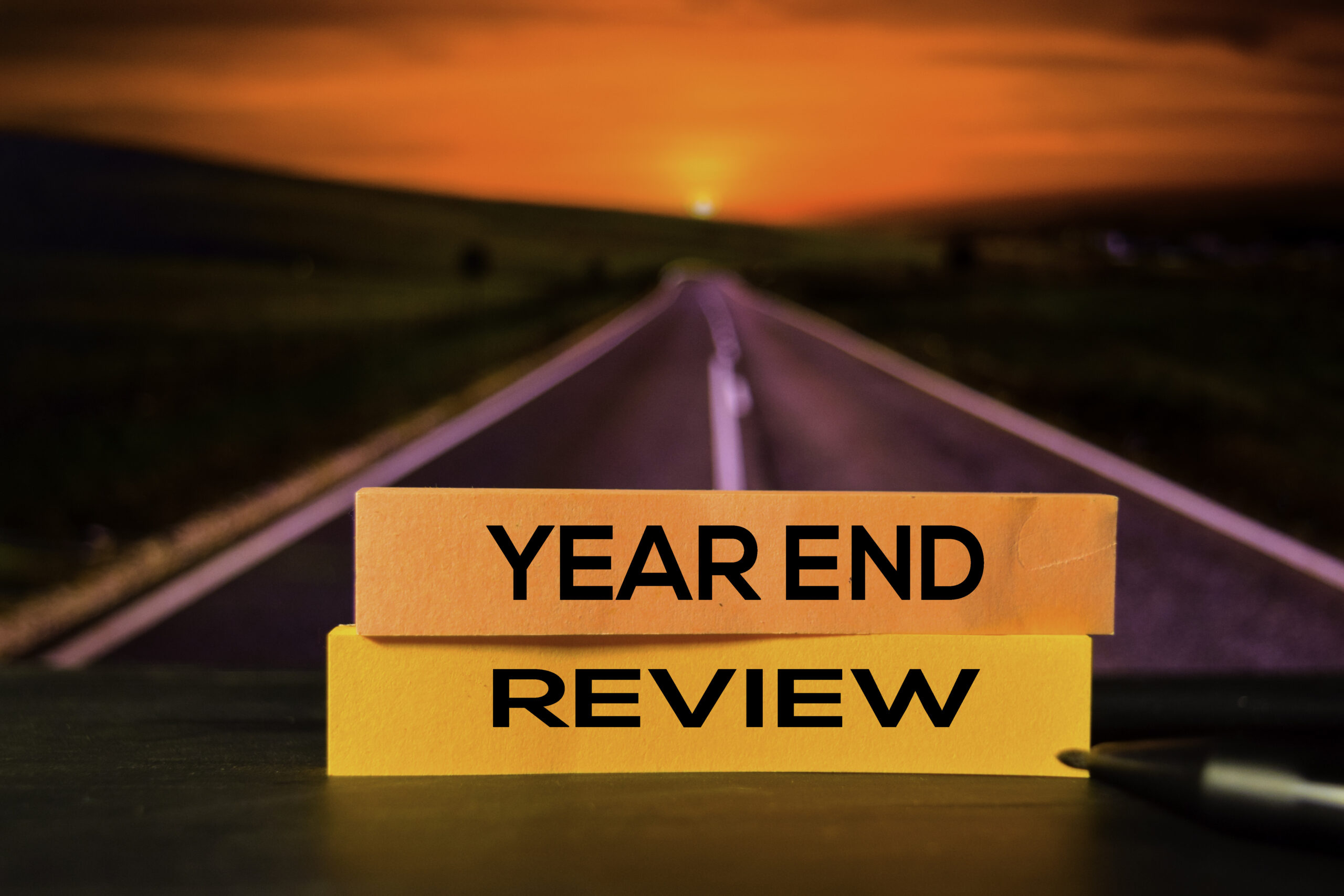 Here we are again at the end of a year—this one the first in several where courts and business proceeded mostly as usual and relatively free of shutdowns and delays due to the pandemic. We had surprising denials at the Supreme Court, expected rulings from the U.S. Court of Appeals for the Federal Circuit, a flurry of activity from the U.S. Patent and Trademark Office (USPTO) under newly appointed Director, Kathi Vidal, and some exciting precedents set in the rapidly evolving area of inventions and art created by artificial intelligence machines, among other developments. Below, some of our readers weigh in on what IP news mattered most to them in 2022—add your thoughts in the comments below!
Here we are again at the end of a year—this one the first in several where courts and business proceeded mostly as usual and relatively free of shutdowns and delays due to the pandemic. We had surprising denials at the Supreme Court, expected rulings from the U.S. Court of Appeals for the Federal Circuit, a flurry of activity from the U.S. Patent and Trademark Office (USPTO) under newly appointed Director, Kathi Vidal, and some exciting precedents set in the rapidly evolving area of inventions and art created by artificial intelligence machines, among other developments. Below, some of our readers weigh in on what IP news mattered most to them in 2022—add your thoughts in the comments below!
 Alden Abbott
Alden Abbott
Former FTC General Counsel; Senior Research Fellow
Mercatus Center at George Mason University
The most significant development was the Supreme Court’s decision to deny certiorari in the American Axle case. The [Federal Circuit’s] decision had held that a technology that reduced noise from driveshaft vibrations did not qualify as patentable subject matter under Section 101 of the Patent Act. This decision, which found no support in the plain language of the statute (and was at odds with a common sense understanding of what could be patentable), made manifest that the Supreme Court is not up to the task of correcting erroneous lower court misapplications of the patentable subject matter standard. (Many of those misapplications, of course, are due to highly problematic recent Supreme Court decisions). Those misapplications are chilling patenting activity and thereby undermining American innovation. Accordingly, it is plain now that efforts to undo this damage must be pursued before Congress, through advocacy for a rewrite of Section 101. Such a rewrite should make it clear that Congress rejects the nontextual limitations on patentable subject matter that the Supreme Court has made up out of whole cloth over the last decade.
Bruce Berman
Chief Executive Officer
Brody Berman Associates
- Inability to pass meaningful legislation to enhance patent certainty;
- Continued difficulty securing patent licenses, even under fairest and most reasonable terms;
- The crypto/NFT meltdown (they will return);
- The proliferation of negative IP stereotypes, including those that belittle legitimate licensors;
- USIPA Survey: “What 1000 Americans Believe about Intellectual Property”;
- Confirmation of Kathi Vidal as USPTO Director; and
- The World Trade Organization’s decision to waive patents associated with COVID-19 vaccines.
Rachelle Dubow
Partner
Morgan Lewis
The hottest topic this year in the trademarks space has been the expansion of the Metaverse and the race for brand owners to protect their valuable brands for use in connection with virtual replicas of their real-world goods. As companies look for ways to expand their presence in the Metaverse, they need to be mindful of the sufficiency of their trademark protection both to prevent hijackers from attempting to usurp their rights with unauthorized filings at the U.S. Patent and Trademark Office and to enforce their rights against infringers who use those brands, or confusingly similar brands, in connection with competing virtual goods and services.
Joshua Goldberg
Partner
Finnegan
Last year I couldn’t talk to clients about the Patent Trial and Appeal Board (PTAB) without also talking about the PTAB’s precedential Fintiv decision. It was the topic of conversation. That changed this year. The Director’s June 21 Interim Procedure for Discretionary Denials brought clarity to when the PTAB would and wouldn’t apply Fintiv to deny institution. At least for now, we know on the petitioner side what we can do to avoid Fintiv: ensure our petitions include compelling, meritorious challenges or stipulate not to pursue in a parallel district court proceeding the same grounds as in the petition or any grounds that could have reasonably been raised in the petition. And we know on the patent owner side when it may make sense to skip Fintiv in our preliminary responses, namely, when the only helpful trial date is in an ITC proceeding, which can no longer be the basis of a Fintiv denial. Armed with this additional knowledge and the ability to present statistics on median time-to-trial for civil actions in the relevant district court, we are now able to more accurately predict how Fintiv will or won’t impact our cases. Time to stop talking about Fintiv and focus on the substantive arguments.
Marla Grossman
Partner
American Continental Group
IP and COVID: The Good, the Bad, and the Ugly
The Good
The U.S. patent system awards valuable patent rights to incentivize innovators to risk their efforts and treasure to promote the progress of science and thereby enhance public welfare. The system worked as designed in the past few years as scientists and pharmaceutical companies, with remarkable speed, developed and brought to market vaccines that significantly reduced the harmful effects of the COVID epidemic and, in the process, saved hundreds of thousands, if not millions of lives.
The Bad
Even though the rewards offered by the patent system produced such outstanding results in dealing with the pandemic, the World Trade Organization (WTO) agreed, with the support of the United States, to waive patent obligations for COVID vaccines for five years. In practical terms, this waiver commits the United States to forbear enforcement of certain patent rights on behalf of American companies at the WTO. By so acting, our government has reduced the incentives offered by our patent system with respect to innovation to meet future crises that threaten humanity. At the very least, this waiver action will increase the government’s costs in forming private/public partnerships designed to meet future threats to humanity, whether in the form of disease, climate change or some other form of broad-scale danger.
The Ugly
The WTO waiver agreement not only vitiates patent enforcement rights with respect to vaccines, but it also called for the members to decide whether to extend the waiver to COVID diagnostics and therapeutics by mid-December. There is no reliable data to date that indicates that intellectual property is or has been a barrier to the production or supply of COVID vaccines, let alone diagnostics and therapeutics. While the United States in December announced it supports delaying a decision on extension, in view of the significant disincentive effect of the waiver on innovation and the absence of any evidence that extending the wavier is necessary to promote the public welfare, I hope that our government ultimately acts to preserve the innovation-promoting values of our patent system so that – like in the movie, the hero – in this case our patent system – prevails in the end.
Steve Kunin
Partner
Maier & Maier
In my opinion, the two biggest moments for IP in 2022 were the confirmation of Kathi Vidal as the Director of the USPTO and the formation of the Council for Innovation Promotion, chaired by former USPTO Directors David Kappos and Andrei Iancu. Kathi Vidal, through her leadership, has brought a welcomed outreach approach that promotes broad spectrum feedback and participation by the patent community in the formulation of patent and trademark policies that are designed to promote innovation through a variety of programs to increase participation of women, minorities and youth in a variety of ways, as well as energizing the patent community to offer suggestions on how to best improve the operations of the USPTO. She is engaging both the domestic and international IP communities to address systemic challenges impacting the innovation sector as well as U.S. and foreign IP offices. There are many global challenges facing the innovation community that require strong leadership and visionary approaches to problem solving. The C4IP has been newly formed and is prepared to take on these challenges through the proven leadership of David Kappos and Andrei Iancu.
Daryl Lim
H. Laddie Montague Jr. Chair in Law and Founding Director, Intellectual Property Law and Innovation Initiative
Penn State Dickinson Law
Stakeholders have desired greater coordination and greater grassroots engagement. The U.S. IP Alliance and its national and international chapters emerged in response. They rest on three pillars – 1) IP awareness and education, 2) ecosystem collaboration and 3) diversity and inclusion.
The Alliances’ goals are as ambitious as they are noble – nothing less than improving the lives of every person on earth using IP through:
- Empowering community colleges, university tech transfer offices, inventors, entrepreneurs, and creators.
- Building a knowledgeable IP workforce by integrating IP training and skills development into K-12, university, and other curricula across the country.
- Establishing effective support structures so all people, especially underrepresented groups, can benefit from a bold reimagining of what IP can offer.
The Alliances seek a more efficient, effective, and collaborative IP ecosystem to help people get what they need faster and at a fair price. They also shun lobbying for legislative change, given its divisiveness. Managing IP recognized Scott Frank, who heads the Alliances, as one of the 50 most influential people in IP for his vision and efforts. If the Alliances can rebuild trust in the IP system, strengthen cooperation between skeptical stakeholders, and benefit neglected constituents, it will be a game changer.
Tennell Lockett
Managing Partner
Townsend & Lockett
What mattered most is the development and anticipated installation of the Unified Patent Court (UPC). In theory, the UPC (which is an international court governing certain patent disputes for participating EU member states) could curtail or eliminate costly duplicative litigation in the EU and inconsistent rulings across member states. The effect on legal rights and legal budgets could be massive. The UPC could potentially make strides in harmonizing patent rights in the EU and increase efficiency in administering and enforcing patent rights.
Scott McKeown
Partner, Chair PTAB Group
Ropes & Gray
Western District of Texas (WDTX) Chief Judge Garcia recently ordered the assignment of new patent cases filed in his Waco division to be randomly assigned across the full slate of WDTX judges. This was the biggest moment in 2022 for patent litigation. The change took away patent plaintiffs’ previous ability to guarantee themselves Judge Albright of the Waco Division. This development, coupled with new USPTO Director Vidal’s changes to PTAB discretionary denial practice (also in 2022), tore up the previous patent monetization playbook for non-practicing entities (NPEs). Prior to these changes, filing suit in Judge Albright’s Court, and then persuading the PTAB to deny otherwise meritorious PTAB patent challenges in the face of that accelerated trail schedule, was an effective one-two punch for NPEs. PTAB discretionary denials are now all but eliminated, and at least until Judge Garcia alters the assignment order, or retires, random judge assignments are the new norm for Waco filers. While some are hoping for a change to this assignment policy (perhaps at Judge Garcia’s retirement), given the attention Judge Albright’s practices drew from powerful members of Congress, any change in assignment policy may prompt a legislative response.
Hon. Paul R. Michel
Chief Judge (Ret.)
U.S. Court of Appeals for the Federal Circuit
The Supreme Court denied cert., yet again, in a case presenting an extension of its rulings on eligibility. American Axle’s fate followed over 50 similar such denials since 2012. In that respect, nothing new. But the basis of the Federal Circuit’s decision was a most dramatic expansion of eligibility law, because the decision relied on Section 112’s requirement for enabling disclosure of specifics of how an invention works to find claims’ ineligibility. If the Court would not take this case, what case would it?
Although I joined fellow amici Senator Thom Tillis (R-NC) and former Director David Kappos in urging the Court to take the case, in retrospect, I am relieved it declined.
In its ruling in Mayo, the High Court surprisingly sanctioned importing aspects of obviousness into assessments of eligibility. In American Axle, the Circuit did likewise with enablement, continuing this conflation of the several “conditions” of patentability in later sections into Section 101 on eligibility. I suspect the Supreme Court would have upheld Axle, locking in place inappropriate conflation of all future sections into 101. At least now, the Circuit could go en banc in a later case to abandon American Axle.
The second development was the opposite: the grant of cert. in Amgen on the Circuit’s creation of a separate requirement of “possession” in cases of admitted enablement. Here, I predict the Supreme Court will overturn the Circuit, holding its separate test inconsistent with the plain meaning of the language of Section 112. What these contrasting 112 rulings show is the Court’s inconsistent treatment: literal construction of language in 112, but ignoring the literal language in 101.
What the pair of cases illustrates is the time has come for legislation so that Congress’ intentions are followed, and patent law becomes more coherent and predictable. Just as the Supreme Court’s decision in Halliburton led to the 1952 revision of the statute, these two cases should prompt the Congress to reclaim its role as the law giver of this statutory regime.”
Brian Nolan
Partner
Mayer Brown
There has been an ongoing debate concerning how the Federal Circuit analyzes enablement and written description for claims that define a genus by the function that its constituents perform rather than by their structure. Several prominent commentators have described the Federal Circuit’s tests for these requirements as bringing about the death of the genus claims in the chemical and pharmaceutical arts. The Supreme Court had the opportunity to address these issues through Juno Therapeutics v. Kite Pharma, No. 21-1566, for written description, and Amgen v. Sanofi, No. 21-757, for enablement. The Court rejected the petition in Juno, but it granted certiorari in Amgen to address whether a patent specification must enable the full scope of the claimed embodiments. Those who pressed the Court to clarify the requirements for functional genus claims will view the grant as a hollow victory. Even if the Court changes the enablement analysis, the written-description analysis will remain a difficult barrier for these types of claims. Any decision other than an affirmance by the Court will leave the debate ongoing, and a reversal will likely increase the ambiguity surrounding the requirements of 35 U.S.C. § 112 for a functionally claimed genus.
Karthika Perumal
Partner
Womble Bond Dickinson
The Copyright Claims Board (CCB) gave a much-needed forum for small copyright infringement claims. Only time will tell if the CCB will achieve enough success to support the folks who have been advocating for a small claims patent court, or if patent litigation will continue to be the “sport of kings.”
William Stroever
Member
Cole Schotz
One of the most closely-watched cases entering 2022 was Nike v. StockX, LLC, and so far that case remains unresolved. The case deals with the intersection of trademarks, the virtual world of non-fungible tokens (NFTs), and the bounds of a trademark owner’s rights. Nike has alleged that StockX’s creation and sale of NFTs incorporating Nike’s trademarks constitute trademark infringement, while StockX has argued that its actions are protected by the first sale doctrine. This case, along with similar cases like Hermès v. Rothschild, will begin to outline the relationship between trademarks in the real world and the NFT world.
An area that saw significant trademark activity this year was the cannabis space, starting with AK Futures LLC v. Boyd Street Distro, LLC. In a momentous decision, the Ninth Circuit Court of Appeals held that delta-8 THC is legal for purposes of trademark protection and affirmed the decision against Boyd Street. The decision has given a little more comfort to those in the cannabis industry and should open the door to similar arguments from cannabis brands in the future.
Finally in lighter developments, on June 21, 2022, the USPTO issued a registration to Ohio State University for the mark THE. Ohio State University overcame the USPTO’s refusal by submitting a revised specimen showing the THE mark not on the front of its shirts, but in the inside tag/label area, which was apparently enough to convince the USPTO that the term was serving a trademark function. As expected, comment by the USPTO on the decision to approve the registration was minimal. Over the coming year or two (depending on USPTO backlog), we will certainly see other trademark applicants attempt to rely on this decision of registration in support of other, similar marks. Those decisions and the courts’ or TTAB’s comments on those decisions will highlight whether this is a change of approach for the USPTO or a one-off registration based on Ohio State University’s specific circumstances.
 Jonathan Stroud
Jonathan Stroud
General Counsel
Unified Patents
It’s a tough call, but I’d have to say that the Chief Judge Connolly [of the U.S. District Court for the District of Delaware] hearing related to IP Edge was unlike anything we’ve seen in some time.
Wendy Verlander
Managing Shareholder
Verlander, LLP
Many important things happened in 2022. The Western District of Texas stopped assigning cases filed in Waco to Judge Albright and began assigning them to judges across the district, resulting in a dramatic reduction of cases filed in Waco. VLSI was awarded over $2 Billion in a case against Intel and then became the subject of a shakedown from a third-party company who used an inter partes review (IPR) to try to extort money, punctuating the need for an IPR standing requirement. Courts required disclosure of litigation funding arrangements, which caused a lot of discussion about the relevance of that information. Most importantly, the Supreme Court once again refused to weigh in on the patent eligibility mess it created in Alice when it refused to accept cert in American Axle, despite the Solicitor General’s recommendation and the deafening pleas from inventors, lawyers and judges. Thankfully, a bill attempting to fix this intractable problem has been introduced in the Senate. Let’s hope that gets some traction in 2023.
Image Source: Deposit Photos
Image ID: 78364960
Author: olanstock

![[IPWatchdog Logo]](https://ipwatchdog.com/wp-content/themes/IPWatchdog%20-%202023/assets/images/temp/logo-small@2x.png)

![[Advertisement]](https://ipwatchdog.com/wp-content/uploads/2024/04/Patent-Litigation-Masters-2024-sidebar-early-bird-ends-Apr-21-last-chance-700x500-1.jpg)

![[Advertisement]](https://ipwatchdog.com/wp-content/uploads/2021/12/WEBINAR-336-x-280-px.png)
![[Advertisement]](https://ipwatchdog.com/wp-content/uploads/2021/12/2021-Patent-Practice-on-Demand-recorded-Feb-2021-336-x-280.jpg)
![[Advertisement]](https://ipwatchdog.com/wp-content/uploads/2021/12/Ad-4-The-Invent-Patent-System™.png)







Join the Discussion
4 comments so far.
Gene Quinn
December 29, 2022 01:19 pmModel 191-
Don’t say it can’t get any worse than it is now. Every time I think that, the lunacy seems to know no bounds. I have absolutely no doubt that it can, and unfortunately will, get worse.
Model 191
December 21, 2022 01:02 pmLot of interesting committees and big chiefs talking about patent laws.
Nothing changes and only gets worse.
The Supreme Court and Congress not concerned with patents because of a bad patent big tech narrative.
This blog is becoming less interesting.
Just get rid of 101. Simple solution.
All the government is doing is complicating the 101 issue.
It can’t get any worse than it is now.
Night Writer
December 20, 2022 04:55 pmGood stuff. Thanks.
Daizz
December 20, 2022 08:00 amMost spectacular is the ongoing ipr 879 neonode vs. Apple Samsung alphabet